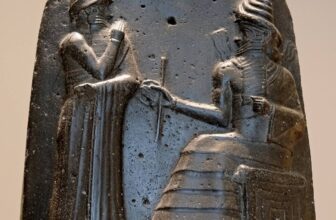Why is Venus de Milo so special?
The Venus de Milo, a timeless masterpiece of ancient Greek sculpture, is one of the most celebrated works of art in history. Created during the Hellenistic period, it has captivated audiences for centuries with its enigmatic beauty, intriguing history, and cultural significance. This discussion delves into the reasons why the Venus de Milo is so special, exploring its artistic qualities, historical context, and enduring influence on art and culture.
Artistic Mastery
The Venus de Milo is renowned for its extraordinary craftsmanship. Carved from Parian marble, the sculpture stands at approximately 6 feet 8 inches tall and depicts a goddess, widely believed to be Aphrodite, the Greek goddess of love and beauty. The work’s intricate details, harmonious proportions, and sensuous form exemplify the height of Hellenistic artistry. The sculptor, thought to be Alexandros of Antioch, though this attribution is debated, demonstrated a masterful understanding of anatomy and an ability to convey lifelike qualities in stone.
One of the most striking features of the Venus de Milo is its contrapposto stance. This pose, where the weight is shifted onto one leg while the other is relaxed, creates a dynamic sense of movement and balance. It imbues the sculpture with a sense of grace and naturalism, inviting viewers to move around it and appreciate its form from multiple angles. The play of light and shadow across the marble enhances its three-dimensionality, further emphasizing its lifelike quality.
The Venus de Milo’s incomplete state, most notably the absence of its arms, adds to its mystique. The missing arms, which have sparked endless speculation about the original pose and meaning of the sculpture, leave room for interpretation and imagination. This element of incompleteness has not diminished the sculpture’s appeal but rather heightened its intrigue, allowing viewers to project their own ideas onto it.
Historical Context
The Venus de Milo was created during the late Hellenistic period, around 130–100 BCE. This era was characterized by a shift from the idealized forms of the Classical period to a more expressive and dramatic style. Artists of the Hellenistic age sought to capture a wider range of human emotions and experiences, often incorporating dynamic compositions and intricate details into their works. The Venus de Milo embodies this transition, blending the idealized beauty of earlier Greek art with a subtle sense of individuality and realism.
The sculpture was discovered in 1820 on the island of Melos (modern-day Milos) in the Aegean Sea, which is how it acquired its name. A farmer reportedly unearthed it while digging in a field, and it was subsequently acquired by the French ambassador to the Ottoman Empire. The statue was presented to King Louis XVIII of France, who donated it to the Louvre Museum, where it remains on display to this day.
The Venus de Milo’s discovery coincided with a period of renewed interest in classical antiquity, fueled by archaeological discoveries and the Romantic movement’s fascination with ancient Greece and Rome. Its arrival in France generated considerable excitement and quickly established it as a symbol of artistic and cultural achievement.
Symbolism and Cultural Significance
The Venus de Milo’s association with Aphrodite has made it an enduring symbol of beauty and femininity. Aphrodite, as the goddess of love and desire, represents ideals that have resonated across cultures and epochs. The sculpture’s serene expression, flowing drapery, and sensuous form evoke a timeless allure that continues to captivate modern audiences.
Moreover, the Venus de Milo serves as a testament to the artistic and intellectual achievements of ancient Greece. It embodies the Greek ideals of harmony, proportion, and balance, which have profoundly influenced Western art and aesthetics. The sculpture’s enduring appeal lies in its ability to transcend time and place, speaking to universal themes of beauty and human creativity.
The statue’s incomplete state also contributes to its symbolic power. The missing arms have prompted countless theories about what the Venus de Milo originally held or did. Some scholars suggest she may have been holding an apple, referencing the mythological story of the Judgment of Paris, in which Aphrodite was awarded a golden apple as the fairest of the goddesses. Others propose she might have held a mirror or been leaning on a pillar. This ambiguity allows the Venus de Milo to function as a canvas for diverse interpretations, enhancing its enigmatic allure.
Influence on Art and Culture
The Venus de Milo has exerted a profound influence on art and culture since its rediscovery. It became an icon of classical beauty during the 19th century, inspiring artists, writers, and intellectuals. Romantic poets such as John Keats and Percy Bysshe Shelley drew inspiration from the ideals of beauty and perfection embodied by the sculpture. Similarly, visual artists incorporated elements of its form and style into their own works, perpetuating its legacy.
The sculpture’s influence extends beyond the realm of art. It has been referenced in literature, music, and popular culture, symbolizing an ideal of beauty that transcends historical and cultural boundaries. Its image has been reproduced in countless forms, from postcards and posters to replicas and merchandise, ensuring its continued presence in the collective consciousness.
In the modern era, the Venus de Milo has also been reinterpreted through the lens of contemporary art and feminism. Some artists have challenged traditional notions of beauty and femininity by creating works that deconstruct or reimagine the iconic statue. These reinterpretations highlight the evolving meanings and significance of the Venus de Milo in a changing cultural landscape.
Preservation and Public Engagement
The Venus de Milo’s residence in the Louvre Museum has made it accessible to millions of visitors from around the world. As one of the museum’s most famous exhibits, it draws crowds who come to admire its beauty and learn about its history. The Louvre’s efforts to preserve and present the sculpture ensure that it remains a vital part of the global cultural heritage.
Technological advancements have also played a role in enhancing public engagement with the Venus de Milo. Digital reproductions, virtual tours, and educational programs allow people who cannot visit the Louvre in person to experience the statue and learn about its significance. These initiatives help to broaden the audience for the Venus de Milo and ensure its enduring relevance in the digital age.
The Venus de Milo’s enduring appeal lies in its exceptional artistry, rich historical context, and symbolic power. It represents the pinnacle of Hellenistic sculpture and serves as a timeless icon of beauty and creativity. Its incomplete state invites speculation and interpretation, adding to its mystique and ensuring its continued fascination for audiences across generations.
As a cultural artifact, the Venus de Milo bridges the ancient and modern worlds, reminding us of the enduring legacy of Greek art and its influence on Western civilization. Whether admired for its aesthetic qualities, studied for its historical significance, or reimagined through contemporary perspectives, the Venus de Milo remains a cornerstone of artistic and cultural discourse, a testament to the enduring power of human creativity.




